The Education of Chris Korfist: Chapter 5

The Internet is Good For Something
The internet started to get its act together. You could actually search for topics without knowing the IP address. People started to connect with each other through message boards. (I could never figure out the chat rooms like Kip in Napoleon Dynamite). The most promising for the athletic development community were the message boards Supertraining and EliteFTS. Everyone there was looking for better ways to train athletes. Social media wasn’t a thing yet so people had open honest discussions on the forum. People weren’t afraid to share their thoughts. There was no fear of social flaming. Posters weren’t looking for “likes”, “friends” or “followers”. Some didn’t want their identity exposed and used pseudonyms.
The pseudonym that kept popping up with similar questions, thoughts and comments as mine was djtrigger1. Eventually, I PM’d him to find out more. It turned out that he was just like me: a high school football/track/strength coach frustrated with the traditional methods that did not provide the improvements that we expected. After weeks of exchanges, we decided to get together. I broke up a visit with my in-laws in Cleveland and drove up to Rochester to spend a couple of days with Dan. (I know… what a corny, internet bromance story). We decided to pool our resources and data to train our athletes to see what works. The beginning of our journey.
“A new friend is always a miracle, but at thirty-three years old, such a bird of paradise rising in the sage-brush was an avatar. One friend in a lifetime is much.” ~Henry Adams
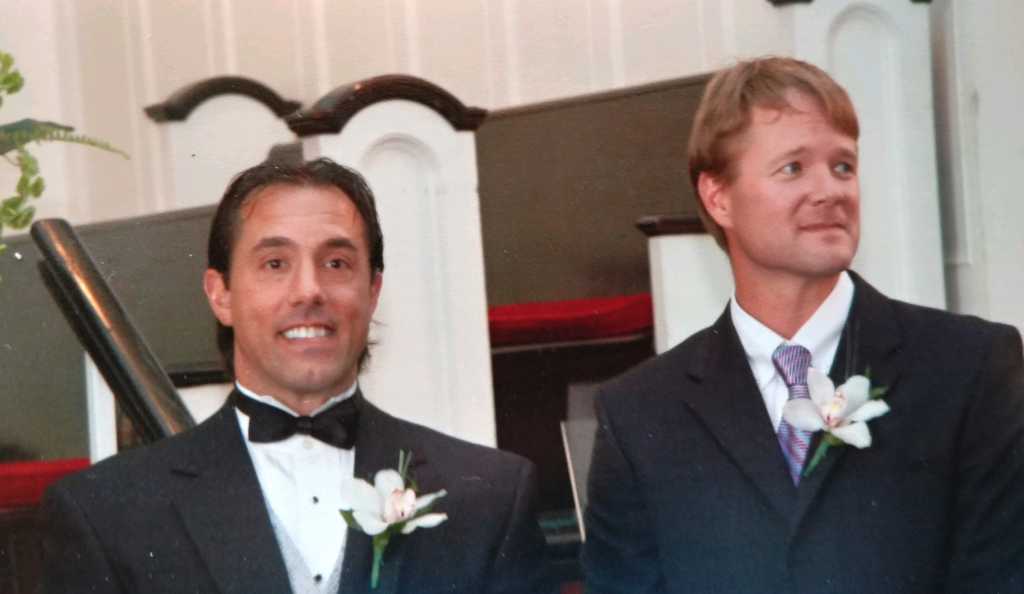
DB Hammer
When someone had great things to say, we would investigate their methods and try them them out. Our first quest started with a German coach who went by “DB Hammer”. He had some posts on Supertraining and Elite FTS that really caught our attention. It was the first time a coach viewed things from a neurological standpoint and more importantly, to break it down so we could understand. DB Hammer eventually released a book which we devoured.
What we discovered was that using DB’s methods we could assess our athletes and give them a workout that would mesh with the athlete’s neurology. We could now give each athlete what they needed instead of guessing. We knew exactly how much to give them based on Auto-Regulating (AREG). No more cookie-cutter workouts. No more tapering. No more guessing and no more hoping for results.
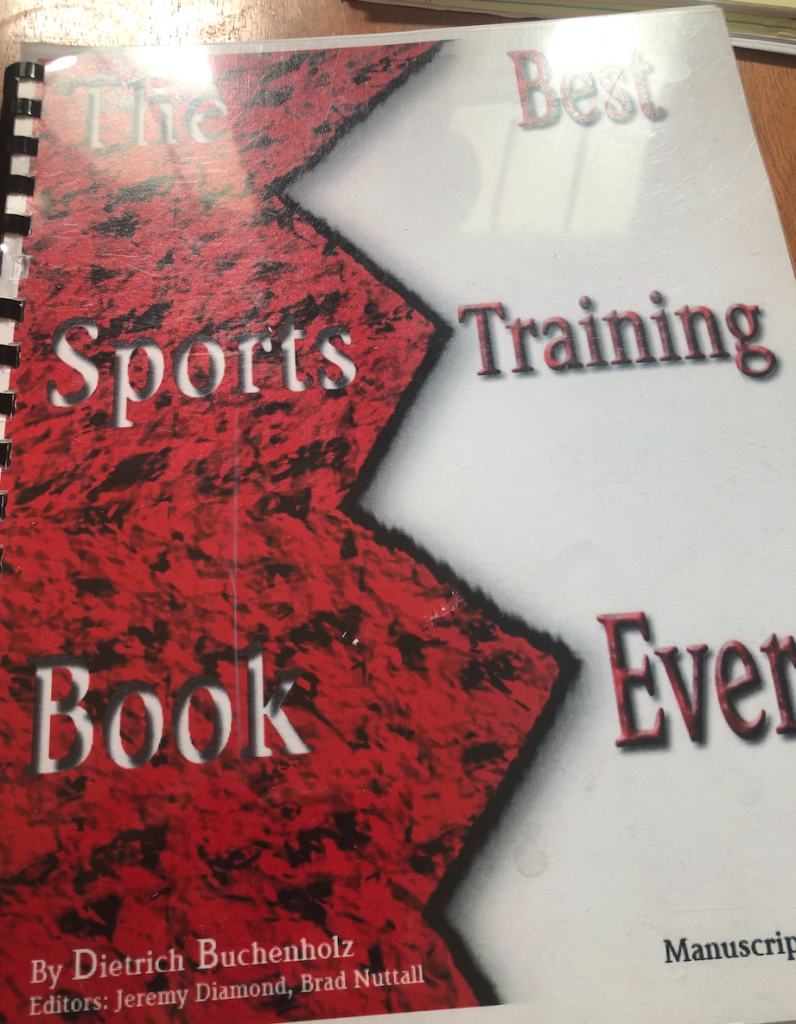
Dan and I have never been afraid to throw money at chasing our dream. We have traveled all over the world, bought all kinds of equipment and paid for email exchanges. We decided to reach out to DB and offered to pay for Q&A and help with designing workouts. He agreed. Our DB schedule would be the following:
‣ 5:00 AM: Wake up and read DB’s email, forward to Dan.
‣ 5:30 AM: Phone call to discuss the email.
‣ 6:00 PM: Call to set up question for the next day.
Every morning was like Christmas. We got explanations that made sense, workout ideas that produced results, and videos that were assessed and new ideas to ponder. It was a new form of crack for us. The result of the email exchanges are the DB EMAILS.
Eventually, DB asked if we would run a forum in exchange for emails. We jumped at the idea, despite not having any knowledge of how forums worked. We had it up and running pretty quick. For a short period of time, we were one of the top S&C sites on the web. But success breeds contempt. One morning, while doing the daily chore of monitoring the traffic, Dan realized that someone had flooded the forum with porn. We were aghast. Two high school teachers running a forum that was loaded with porn. Sounded like a great way to lose a teaching job, so we pulled the plug. And so did DB. He permanently disappeared.
Dan and I never recovered from that event which is why we are both leery of social media. The idea that one person can destroy years of hard work by a simple act is incomprehensible to me.
In spite of the forum headache, the relationship bred huge results. The exchanges gave us a great new way to train and our teams were consistently a top five 4×1 in Illinois with kids that don’t look like they belong on the medal stand. The football team was in the same boat with multiple D1 players every year and deep playoff runs. Dan won five straight sectional titles in track.
How To Run Fast Volume 1 and 2
At this point Dan and I felt we could go two different ways, we could keep all off this information to ourselves, or we could share the information with other coaches so they could help their athletes get the same results we were experiencing. Personally, this was the chance to help others be the coach that I was looking for when I was an athlete, someone who could help me get faster.
We decided to put together a video series that boiled down most of DB’s stuff so an everyday coach could use it. We went through some failed attempts at putting this together which included an intro on Dan’s porch where he was dived-bombed by an angry bird or borrowing a projector and reading our dialogue off the wall in front of us.
Once we had the video we liked, I taught myself video editing and Dan and I released How to Run Fast Vol. 1 and 2. We were so proud that we actually applied for a certificate from the Library of Congress and got one. When we had speaking gigs around the country, we would rent a booth and sell our videos and we started traveling the country together. Like an old married couple, I would drag him to see all of the historical spots and he would complain. We walked across Boston in one day and walked the National Mall in DC. The most memorable would have been the Philadelphia trip when I got call on a Saturday morning that my house burned down and had to find a way to get home. In addition to the videos, we started posting articles as well.
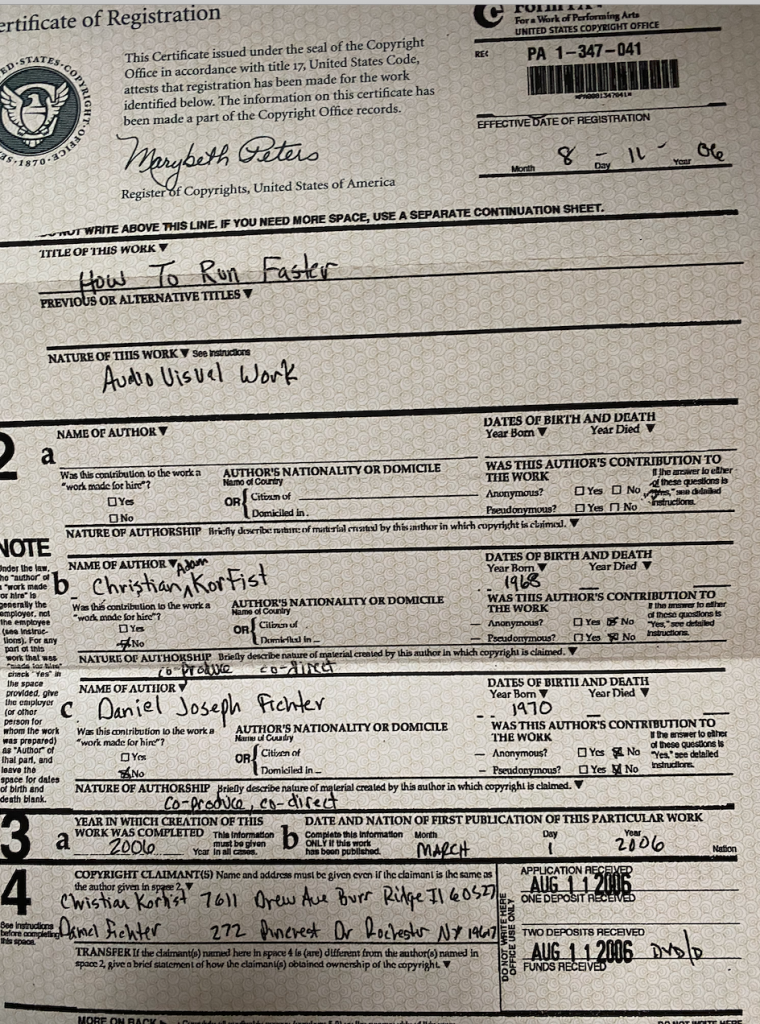
With the sharing of all of the new information, we were brought into contact with people from all over the world. One of most memorable professional events was within 24 hours after I posted an article entitled “Why We Don’t Squat” and I was contacted from someone from every continent except Antarctica. And in typical internet fashion, two days later someone who must not have liked my article threatened to come over and “break my pencil neck.” I guess they weren’t buying my “I don’t squat” stance.
Through the message boards, I was introduced to the Kraaijenhof brothers, Hans and Henk, who owned Nemesis, a company that was putting out equipment conceptualized by Carmelo Bosco and designed by the brothers. I got to know both of them well through the internet with lots of discussion about training, especially since I invested in some really expensive equipment. I bought the Nemes Vibration Platform that had the EMG readings so the machine could pick the frequency that the individual’s body would respond to. It was the second one in the states. It worked very well. That specific piece of equipment, not all of the other platforms that went on sale later on, is still way beyond its time.
I also bought a YoYo Leg Curl which was the first flywheel concept on the market. That worked very well.
I also bought a device that measured bar speed called the µMuscleLab. This was in 2002-04. Finally, I had found really effective equipment that was ahead of the curve. I found I liked being ahead of the curve. It became a new obsession.
Later, I spent time with Henk when he was in the states. He can easily make hours disappear with his stories, knowledge and conversation. Due to Henk, I got away from the Russian stuff. From Henk’s coaching days and having dealt with Iron Curtain coaches, he gave great context as to how things really worked on the other side and why it really wasn’t applicable in what we do as high school coaches. I learned that context was really important.
We were talking about hyper gravity and I asked how Bosco came up with 13%. He said when Bosco was finished with an idea he moved ahead and left others to complete minor details. Henk was on him about a number for hyper gravity and he randomly just shouted out 13% so Henk would leave him alone. And what do we do, use 13% as gospel. Anyway, the Bosco stuff worked really well and is ahead of its time. His manual on plyometrics and jumping became a foundational change on my program design. Unfortunately, it is out print as well.
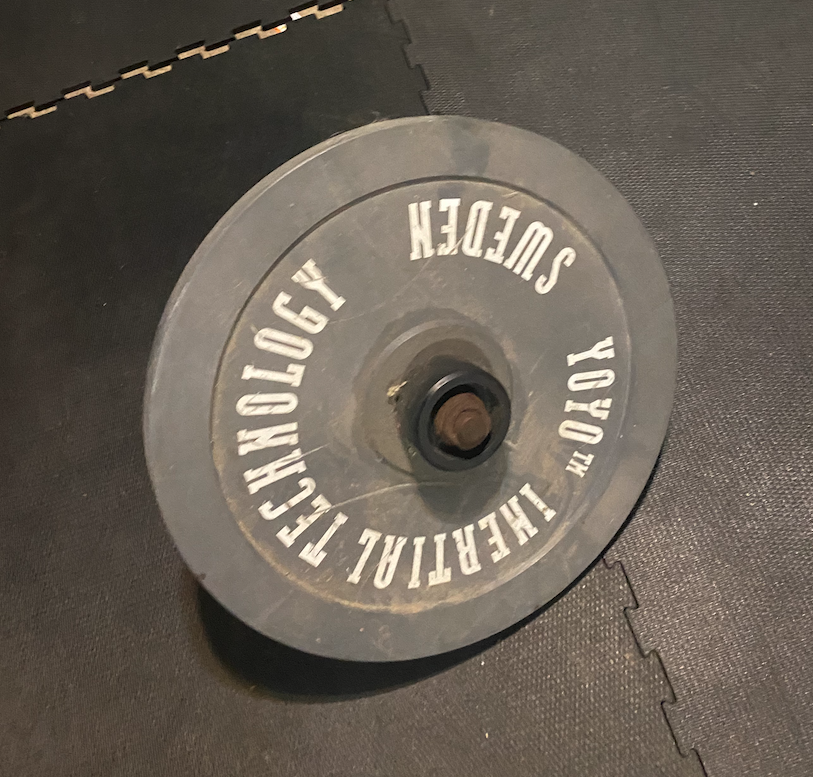
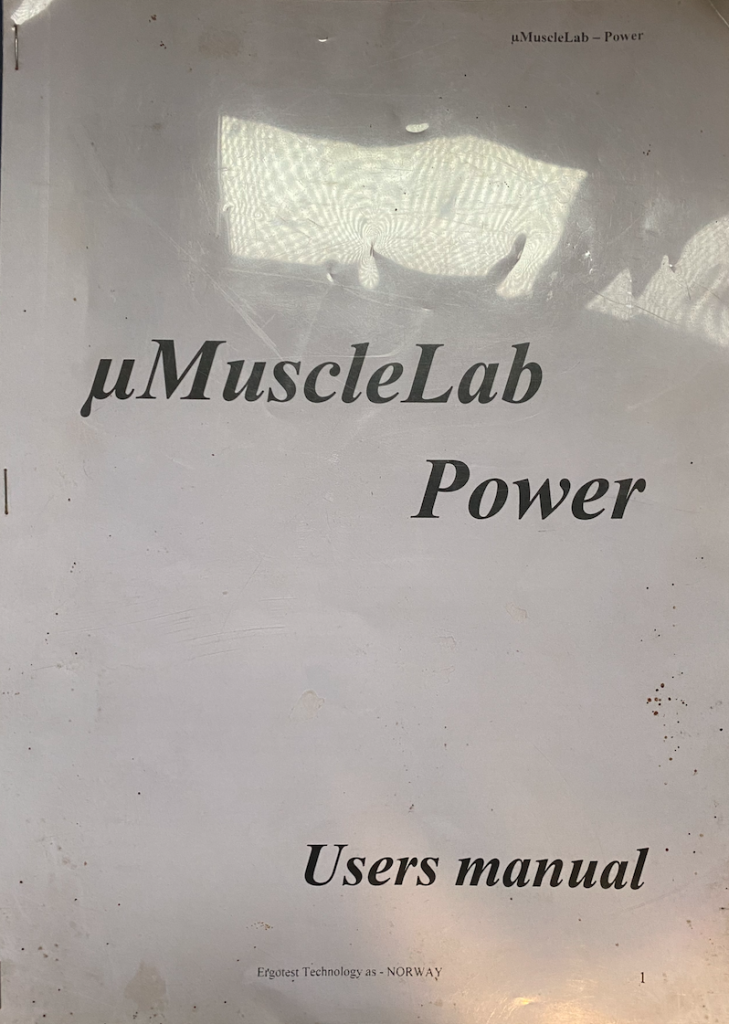
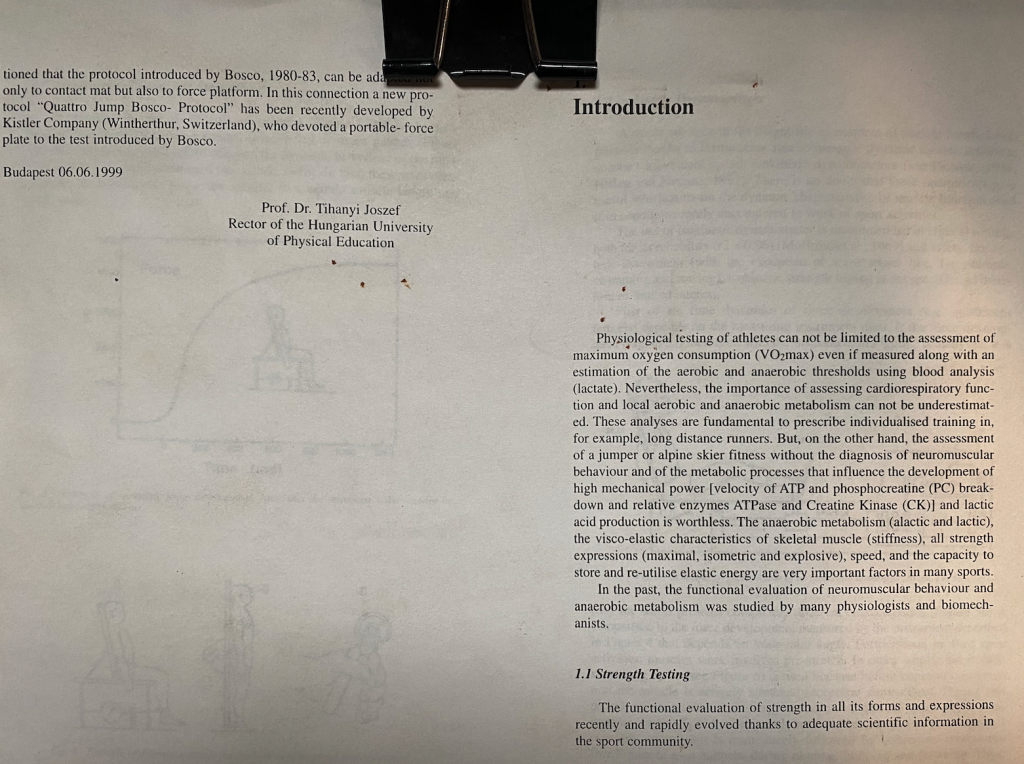
Also during this time period, Dan and I started to delve into the world of Inertia Training with the Impulse machine designed by Steve Davidson. It was a brilliant machine that challenged the timing of the muscle firing pattern. Here is the definition from the website:
Impulse offers an advanced neurological training exercise technology that caters specifically to the demands of performance enhancement. Exercise focuses on developing acceleration, balance, joint mobility, and core stabilization. All of the crucial elements of enhanced performance are honed to a fine edge. Injury becomes a thing of the past while performance is maxed out.
I bought one and used it for a couple of years and worked really well. But what I learned from this experiment was that if you were not perfect in the technique, you actually got worse or even got hurt. That’s how powerful the machine was. Even though regular exercise did not stress the body like this machine, I realized it could still have a negative effect on what your are trying to accomplish. Every exercise has a positive and a negative.
Also, as you can see from the description, it challenges the core. This is when I realized that the core is not static but dynamic in micro-adjusting the spine. Planks and countless other exercises did not challenge the body the way the inertial trainer worked. I stopped doing core exercises. Douglas Heel solidified that idea later.
You won’t find all of this equipment on the side of my house which is a wasteland of rejected equipment. It was about this time that a new head football coach was hired. The head coach that supported me the past 12 years had retired. The new guy wanted control of everything. He did not treat kids well. I called him on it. The administration sided with the new football coach. I left to go coach somewhere else and opened Slow Guy Speed School. The football coach took all of the equipment mentioned, including a belt squat, reverse hypers, chains, Nemes Vibration Plate, etc and threw them out to get rid of any connection to me. That was about $50K worth of equipment.
I moved on and he was fired in two years. I stopped coaching football. I was hired by the top track and cross country program in the country, the Dukes of York and became part of the Long Green Line. I realized if you are coaching for the glory of the emblem on your polo shirt or the person inside the shirt, you are coaching for the wrong reasons. But I do like to win.
I would be remiss to leave out three other important events during this transitional phase of the careers of Dan and I. First, was the advent of timing. DB strongly advocated that we buy electronic timers to get drop-offs on our sprints. We bought the temperamental Brower timing system. It usually took five minutes to get the beams to work properly and we had all kinds of random mistiming events, especially when inside (which was half of my season).
One day internet surfing, I came across a new timer. It was advertised as a BMX racing timer with a watch that you wore. It looked simple enough and I bought one. It worked pretty well but I only had one watch and athletes walking back would sometimes trigger the timer to start or stop. Based on Henk’s recommendations, I upgraded to ALGE beams and a guy named Ernie (Summit Timing Systems) built me a chronometer. The downside was that I needed to cable it all together. It was perfect for indoors because it didn’t pick up various interference that would mess with my signal. I could run athletes though very quickly. It never missed. While owning a good Freelap, a Swift Speed Light, and Stalker Radar Gun, this timer is still a mainstay. There is something to be said about hard wiring things together.
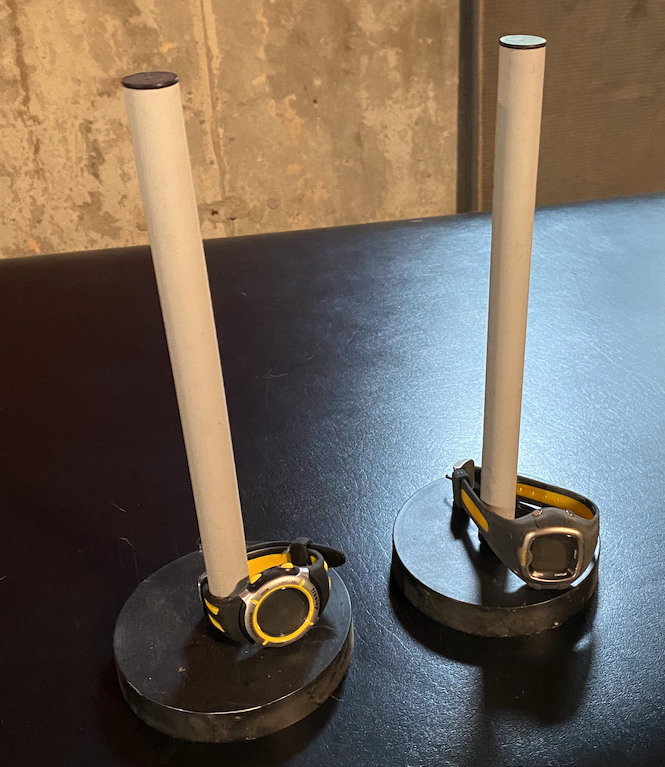
Adam Archuleta
It was also during this period that Adam Archuleta shocked with world at the NFL Combine. It was a model for Dan and I. With our research skills, we found Jay Schroeder was the man behind the machine. We followed our normal path of submerging ourselves into his world. However, he was not as easy to access as some of the other coaches. So, we traveled to find people that had worked with him or trained under him and learned what we could.
Eventually, we found that you could buy into his program with the lease of an ARP Machine. Dan was in and has since leased multiple machines from Jay. I found a former partner who was building a Thera-Stim, which did not have the complicated lease program. I bought one, which I sold a number of years ago. If you listened to the webinar Dan and I put together, you can follow the rest of the story.
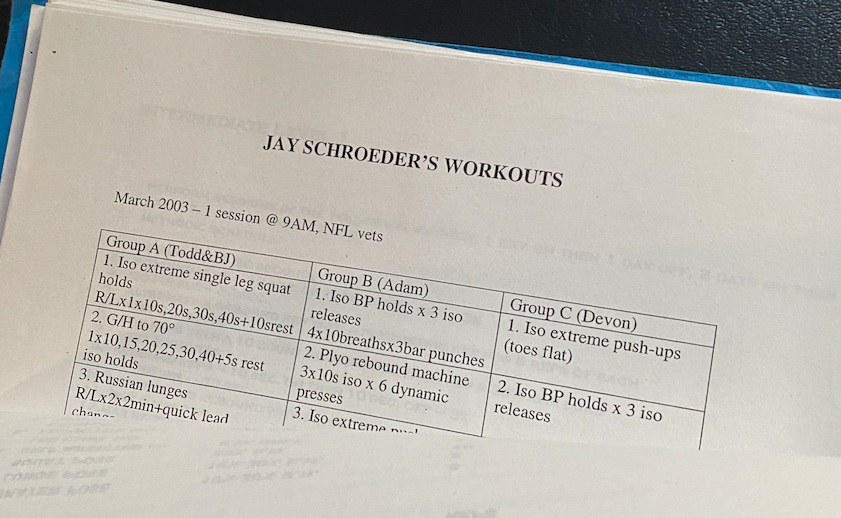
As if this was not enough to “feed the dragon” for an entire career, there was more. A local coach, Ken Jakalski, was also an addict. He found a researcher from Harvard named Peter Weyand who was doing research in sprinting off of a huge treadmill. During a blizzard, Ken hosted Peter to come out a share his work. The blizzard did not keep people away. I made it and so did Dan.
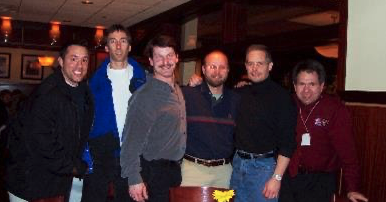
Ken opened with a history of his experimentation with speed development which was great. Peter then came out and deconstructed the traditional way of thinking about sprinting, which was stride length vs stride frequency, and started to talk about vertical force. Now sprinkle in there some great stories, videos, science, and a new way of looking at things. It was like watching the Beatles on Ed Sullivan. I now had a new lens to look at training. Since them, I have gotten to know Peter pretty well and have visited the research lab at SMU. If you ever get the chance to see Peter speak, take advantage of the opportunity. Or better yet, if you get a chance to sit and talk with him, it is a great evening.
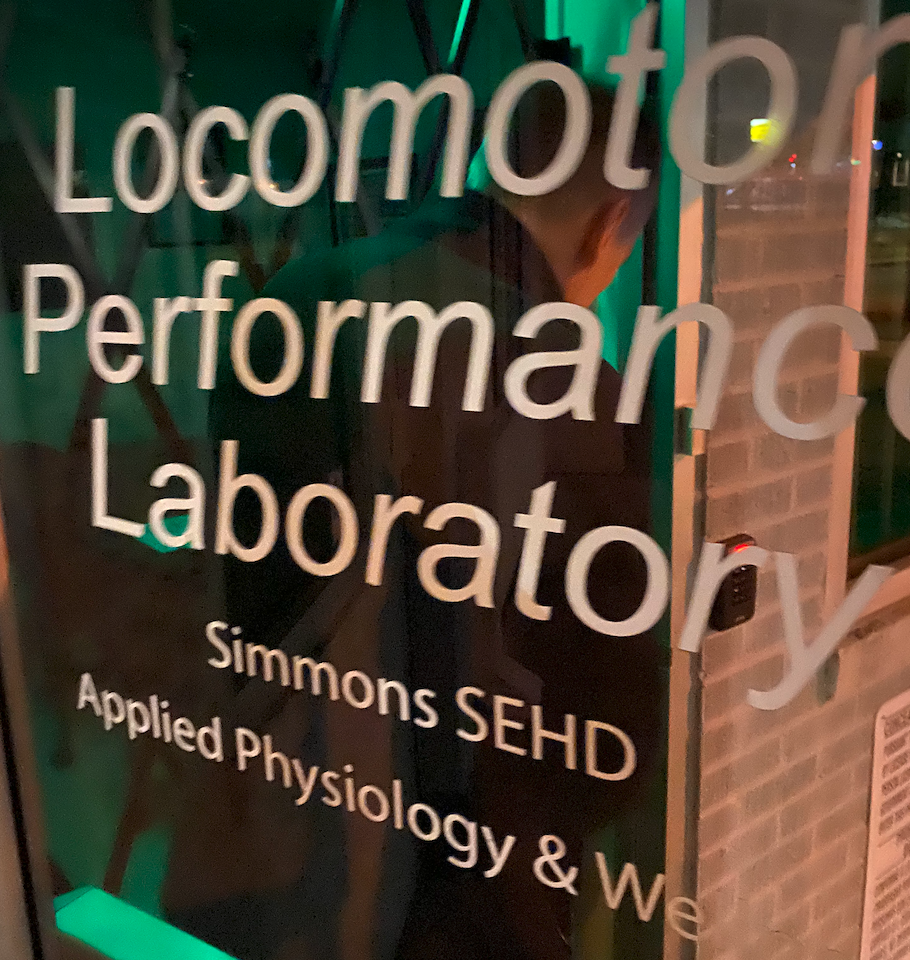
Of course, Dan and I went to work on this. Peter was humble enough to say that he didn’t have an answer. You could look at plyos in a new way. Maybe Barry Ross’s Bear Powered deadlifts may be the answer. We had to try them all. I am still working on this.
The bottom line from this era, we had to synthesize what we learned and put all into a workout while trying to keep the integrity of the creator’s concepts, which basically means you must learn what works for you and what doesn’t. You come to the realization that there is not a one size fits all and you need to find what fits for your program.
More on that later.
+++
Education of Chris Korfist

What a wonderful read. It’s exciting to hear about someone going way outside the existing box to help young people be happy and excel.